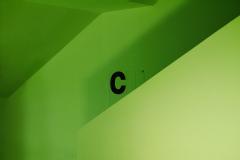Manual Testing Course Curriculum:
Note- I have prepared this training so that It will get over in 7 days of daily 2 hours training. However it might be extended to 8th day if more explanation is needed.
Training will be done on the weekends (Saturday and Sunday) so that batch gets time to work on the trained skills over the week days and timings will be decided on the preference of the batch.
We will be able to understand the below after this training.
Day 1:
Recognize and use basic testing terminology.
Understand why testing is necessary.
Define error, fault and failure.
Explain why errors occur.
Give examples of the cost of errors.
Understand why exhaustive testing is unachievable.
Appreciate why testing is a risk management process.
Understand the fundamental test process.
Understand the difference between the mindsets of developers and testers.
Understand why you cannot test your own work.
Understand the need for regression testing.
Understand the importance of specifying your expected result in advance.
Day 2:
Different models of SDLC and STLC
1. Verification and Validation
2. V Model
3. Sequential Model
4. Waterfall Model
5. High Level Test Planning
6. SPACE (The frontier of Testing)
7. Smoke Testing
8. Sanity Testing
9. Regression Testing
10. Integration Testing
11. System Testing
12. Acceptance Testing
13. Maintenance Testing
Day 3:
Dynamic Testing
1. Functional Test techniques
Black Box Testing
White Box Testing
2. Black box testing
Equivalent Partitioning.
Boundary Value Analysis
State Transition Testing
3. White box testing
Day 4:
Static Testing
1. Objectives
2. Reviews and Test Process
3. Types of review
4. Inspection
Day 5:
1. Test Management
2. Configuration Management
3. Sign offs and Version Management
4. Test Estimation
5. Requirement Traceability Matrix
6. Writing Test cases
7. Executing Test cases
8. Defect Life Cycle
9. Raising a defect
Day 6:
1. Live Practice with application
2. Q&A on the basis of live practice
Day 7:
1. Review of the work given to team
2. Q & A





